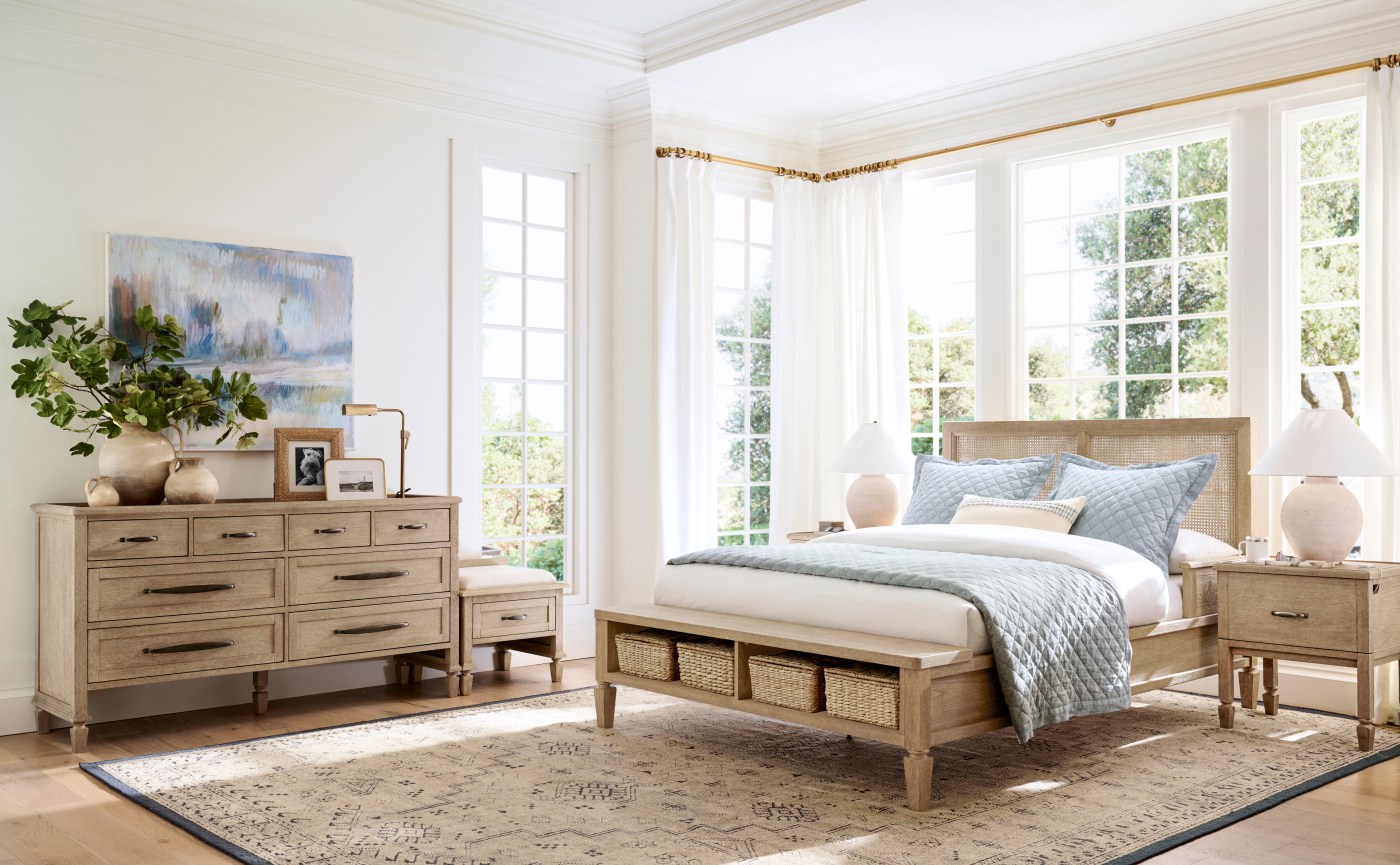
Quietly accessible furniture helps people age in place with safety, style
Knees get cranky, backs get stiff, and balance isn’t what it used to be as we age. But one major furniture retailer is leaning into that with a line of “quietly accessible” furniture that looks like it belongs in a home not a rehab center.
It’s about time. I mean anyone with eyeballs can look at the aging demographic, and the fact that 77 percent of those over age 50 want to stay in their homes as they age, and see a major opportunity.
Despite its forehead-smacking obviousness, the idea wasn’t an easy sell, said Donald Strum, president of Michael Graves Design, the Princeton, NJ, firm that championed the new line.
“Finding a retailer who understood the need for accessible furniture that also looked great was like pushing rope uphill,” he said. “We knew we could design furniture that looked residential, not medical or institutional, and we also knew no one wants furniture that reminds them they’re not well. At Pottery Barn, we found a person who got it.”
The Michael Graves Design for Pottery Barn collection debuted in August. “The target audience goes beyond Baby Boomers who want to age in place (and who expect good design) to those of any age who have permanent or temporary disabilities, and those who want to plan for a future without compromise,” Strum said.
One of the best ways not to compromise your future as you age is to not fall, Strum said, adding “falling is the most dangerous disabling accident for those over 65.” Many never fully recover. Much of the new furniture line’s focus is on making falls less likely.
It also aims to make life easier for those who have mobility issues, as the late Michael Graves did later in life. Confined to a wheelchair after a spinal infection left him paralyzed, Graves championed ways to promote independence and accessibility in homes without sacrificing style. Among the questions he asked: Why aren’t water faucets easier to reach? Why are outlets placed so low on the wall?
As he viewed environments and products from a new perspective, he redesigned them, and until his death in 2015, inspired his team to do the same, said Strum, who worked alongside Graves for 30 years.
Although the MGD team usually designs products from scratch, the relationship with Pottery Barn was different, Strum said. The retailer wanted the design team to retrofit three of the brand’s best-selling furniture lines — Farmhouse, Sausalito and Cayman — so they were accessible, but not obviously so.
The MGD team set to work adding grab points, larger drawer pulls, higher density foam and toe clearances for wheelchairs. “The functional flourishes are hiding in plain sight,” Strum said. “The aim was always safety, style and accessibility, while meeting Pottery Barn’s demand for comfort, quality and value.”
The collection is available in select stores and at potterybarn.com. (Consumers can expect to pay 5 to 10 percent more for the accessible furniture.) And there’s more to come.
Here are the key pieces in the line along with their “functional flourishes”:
Dressers: Raised edges around the top prevent items, like, say, lip balm or pill bottles, from rolling off the edge, meaning you don’t have to stoop to pick them up and risk falling. The edges also have a grab channel built in. Larger pulls make opening drawers with one hand easier, and 9-inch ground clearance allows wheelchairs to scoot by.
Dresser seats: These solidly constructed bench seats provide additional storage as well as a place to sit to get dressed or put on shoes.
Related Articles
At Home: When you become ‘unhinged’ over door hardware, it’s probably time to replace
At Home: The romantic minimalist’s guide to home decor
12 ways to add graciousness to your holiday gatherings
Home decor: Get your home ready for fall but don’t overdo it
And the 2025 ‘Color of the Year’ is … uncertain
Nightstands: In addition to raised edges and easy-grab pulls, they also have built-in power strips and USB ports, eliminating the need to bend over and crawl behind furniture to access a plug. Nightstands are also designed to discretely house CPAP machines, so more attractive accessories can go beside the bed.
Beds: Integrated armrests and pull-and-roll side grips support sitting, standing and repositioning in bed. A built-in bench provides a stable spot for dressing as well as extra, easy-to-access storage.
Chairs: High-density foam and adjustable seat heights that you can set and forget give a welcome boost to those who struggle getting out of chairs that are too soft or too low. Sturdy, wide wooden arms that extend beyond the seat cushion offer critical support when getting in or out of the chair, and “prevent the grope-and-hope” method of sitting down, Strum said. Some chairs also have a rear grab rail along the back to aid balance.
Marni Jameson is the author of “Downsizing the Family Home” and other books. Reach her at [email protected].


